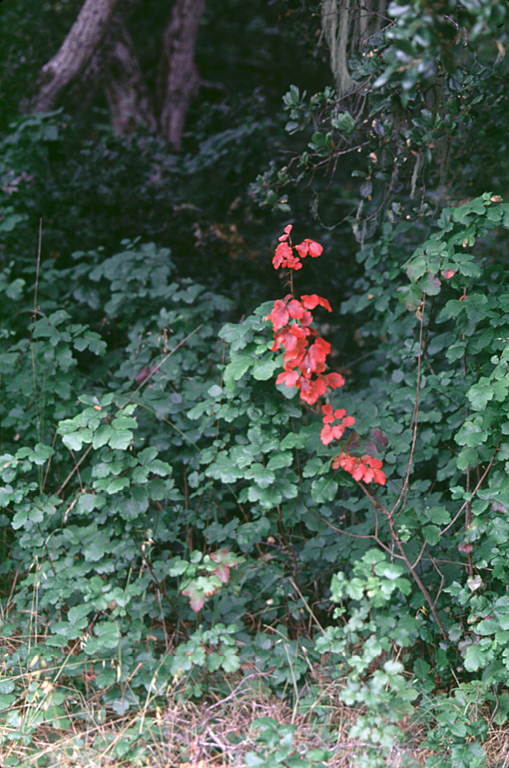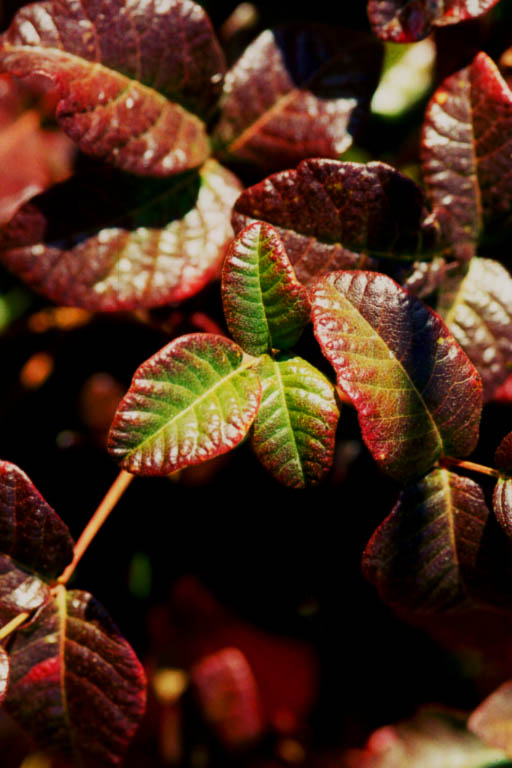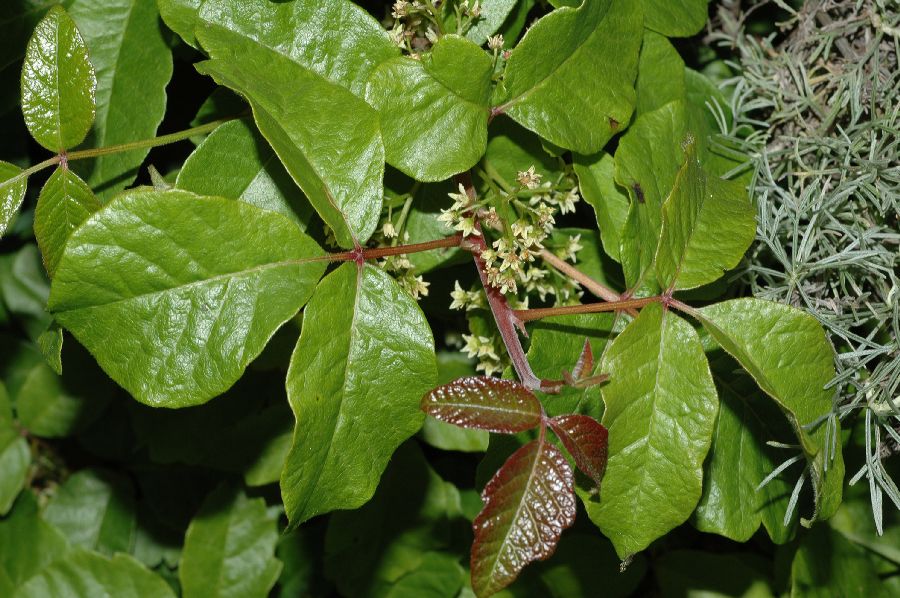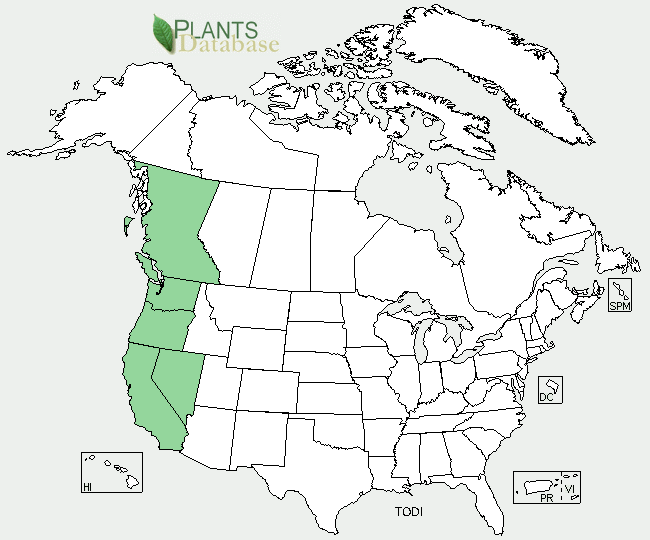Habitat
Toxicodendron diversilobum is found along the west coast of North America
and slightly down into Mexico in Baja California which is why the common name is Pacific
or Western Poison Oak. It can be found from Baja
California to the south, north to British Columbia, west of the
Cascade Mountain Range in Washington, Oregon, and California,
and is found west of the Sierra Nevada and Mojave desert.
Occurs in:
- Mixed evergreen forests = temperate and humid found on the Pacific Coast
- Woodlands = sparse to dense woody vegetation of low trees and shrubs, usually with very thick, tough evergreen leaves
- Chaparral = flat plains, rocky hills and mountain slopes
- Coastal sage shrub = low scrubland plant community of the California coastal sage and chaparral
- Riparian zones = ecosystems located along the banks of rivers, streams, creeks, or any other water networks
As seen by the numerous niches that the Poison Oak has been
found living in this plant has an incredibly diverse range of
habitation. It is found in regions that receive a large
amount of precipitation such as the mixed evergreen forests to a
place that is extremely dry such as the chaparral regions of the
Pacific Coast. It can be found in a wide range of
temperatures, elevations, light intensities, and soil types as
well. It is found in incredibly diverse places but is most
commonly found on hillsides in shallow soils.
Ecological Niche
The Pacific Poison Oak occupies a very important ecological niche in the communities it thrives in. It provides great protection from humans to other species of organisms such as birds that build their nests in the poison oak and other plants that also grow in and around the poison oak plants. Poison oak also is a direct food source for some bird species, black-tailed deer, and even cows, sheep, goats, and horses. The birds eat the berries and the deer and livestock eat the younger leaves of the plant.



